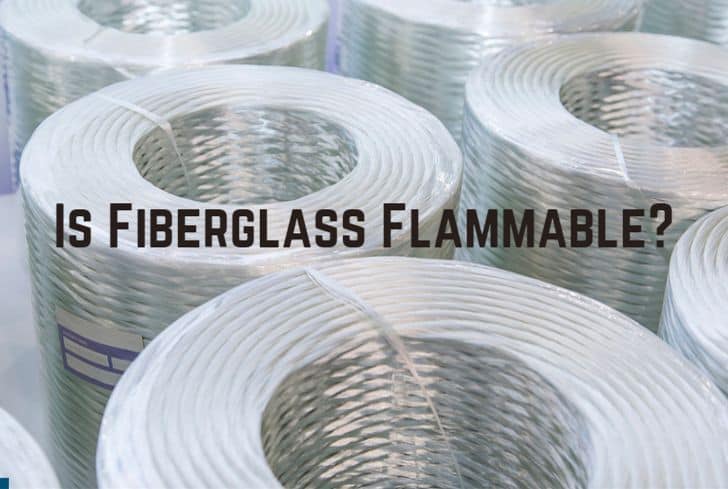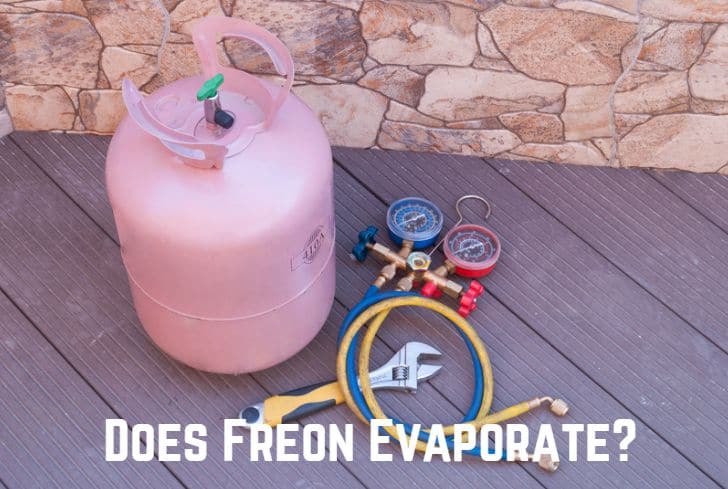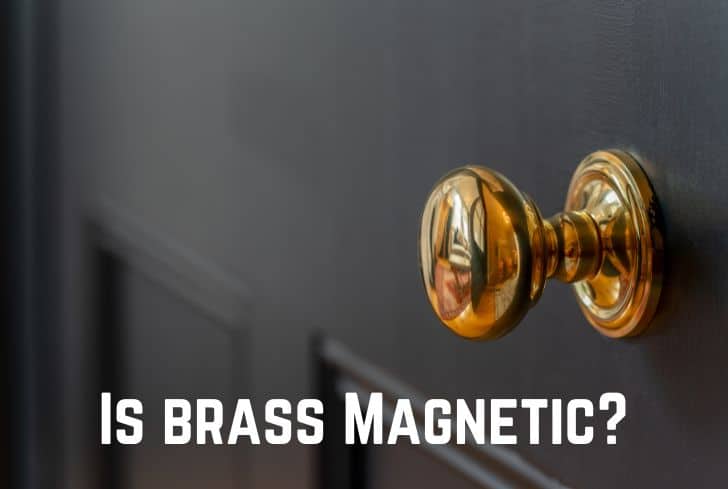Is Glass Conductive? (Answered)

Glass is a non-crystalline amorphous solid that has a wide range of uses. Most glass is manufactured by quenching (rapid cooling) of the molten form although some occur naturally, like volcanic glass. Silicate-based glasses are the most familiar type of glass, and they are also the oldest.
Have you ever wondered if glass is conductive? In this article, we are going to discuss just that. We will begin by looking at the properties and uses of glass. Then we will discuss the electrical and heat conductivity of glass. Finally, we will talk about other aspects of glass, like sustainability and magnetism.
Read: Is Brass Magnetic?
Does Glass Conduct Electricity?
No, glass does not conduct electricity. This is because glass does not have free electrons that can move around, so it cannot carry the electric charge from one point to the other. Glass also has a high band gap, so it acts as an insulator.
For a material to conduct electricity, it must have free electrons that can move the electric charge from one place to the other. Metals conduct electricity in both solid and liquid states, and ionic compounds conduct electricity when dissolved in water.
Metal ions form a giant structure known as the “sea of delocalized electrons”, which can move freely. These free-moving electrons can transport the electric charge from one point to another, which is why metals are conductive. Most non-metals (like glass), however, do not have free electrons and therefore do not conduct electricity.
Glass is made up of silica or silicon oxide, which is stable at room temperature. It consists of oxygen atoms that have a high electronegativity (the tendency of an atom to attract electrons toward itself), and its electrons are tightly held together.
So, a high amount of energy is required to free the electrons from the oxygen atom. We can also discuss this in terms of the band gap. The band gap is the distance between the valence band of electrons and the conduction band. It essentially represents the minimum energy required to make an electron participate in conduction.
In simpler words, a high amount of energy is required to free glass electrons. So, effectively, it does not have any electrons that can move the electric charge from one point to the other. Therefore, glass is not a conductor but an insulator.
Properties of Glass
These are the properties of glass:
- Glass is a transparent non-crystalline solid.
- It is brittle and breaks easily upon impact.
- Glass has great optical properties. It can be produced in large and homogenous panes with perfectly flat/parallel surfaces. Glass’s optical properties aren’t affected by age.
- Glass is weather resistant, so it can withstand sunlight, wind, rain, etc. In window panes, it allows us to manipulate natural light according to our needs.
- Glass can be pressed into any shape and painted in various colours.
Uses of Glass
These are the uses of glass:
- Due to its easy formability, glass is used for bowls, vases, bottles, drinking glasses, etc.
- Glass also serves as a paperweight and marbles in its solid form.
- Windowpanes are made up of glass. Glass can also be coloured with metal salts, and it can be painted as enamelled glass.
- The refractive and reflective properties of glass make it ideal for optical lenses, prisms, etc.
- Glass fibres have uses such as optical fibres (for high-speed internet) in communication. They also serve as thermal insulating material when matted as glass wool, and help to create fibreglass.
Does the Electrical Conductivity of Glass Change?
Yes, the electrical conductivity of glass changes with heat. At room temperature, glass does not have any free electrons to move the electric charge, so it acts as an insulator. However, it becomes a conductor when heated to a high temperature.
At room temperature, there are no delocalized electrons in glass to conduct electricity. A very high amount of energy is required to free the tightly-bound electrons and make them move the electric charge.
Read: Is Lead Magnetic?
However, things change with heat. Glass is an amorphous solid that softens slowly when the temperature is high. This leads to some free electrons that can move. On further increasing the temperature, the viscosity (a measure of its resistance to deformation) of glass decreases, so there are an even greater number of free electrons.
These free electrons allow the glass to conduct electricity. Therefore, at a very high temperature, glass becomes conductive. Check out this video by Ludic Science to see this whole process in action.
Does Glass Conduct Heat?
No. Glass is a bad conductor of heat (as well as electricity). This is because its electrons are tightly held and flow across to pass the heat. Therefore, glass has bad thermal conductivity, unlike metals.
Heat conduction requires an easy flow of electrons. Metals like iron, copper, or gold can conduct both heat and electricity because they have free electrons. Glass, on the other hand, is a non-crystalline amorphous solid.
It is made up of silicon dioxide, and its oxygen atoms are tightly held. A very high amount of energy is required to free the electrons, so glass effectively does not have any free electrons to conduct either heat or electricity. Therefore, it is an insulator.
The thermal conductivity of glass is 0.8 W/m K. This is incredibly less than that of metals. Silver has a value of 406.0, while copper’s value is 385.0.
Does Glass Conduct Heat Better Than Plastic?
Yes. Although both glass and plastic are not good conductors of heat, the former is still better than the latter. They both do not have free electrons to let the heat pass from one point to another.
The thermal conductivity of glass at 25°C is around 0.8 W/m K. Glass’s thermal conductivity is much less, ranging from twice to six times lower. Check out this website to compare the thermal conductivity of common materials.
In water bottles, the wall thickness of plastic bottles is less. Therefore, glass and plastic bottles may seem to have similar thermal properties.
Is Glass Magnetic?
No, glass is non-magnetic. It is a diamagnetic material, meaning that it does not have unpaired electrons, and it, therefore, repels a magnetic field. Glass is not attracted to a magnet, however, in some cases, it can still interact with a magnetic field.
Magnetism is a force caused by the motion of electric charges. Every substance is made up of atoms. These atoms have electrons (particles that carry an electric charge) that circle the atom’s centre, called the nucleus.
In some substances like iron, electrons spin in the same direction. This allows their magnetic fields to combine together and produces a magnetic field extending beyond the atoms. These objects are strongly attracted to magnets and are called ferromagnetic.
However, in most substances, equal numbers of electrons spin in opposite directions. This cancels out their magnetism, and they are not attracted to a magnetic field. These include things like paper, cloth, glass, etc. and are called diamagnetic.
Glass is a diamagnetic material, so it is not attracted to magnets. However, some glasses can contain small amounts of metals like cobalt. These might show some interaction with magnets, especially moving magnets.
Read: Does Copper Conduct Electricity?
Is Glass Biodegradable?
No, glass is not biodegradable. It is made up of substances like limestone, ash, and sand, and it does not degrade. However, it is not as harmful to the environment as plastic because it can still be recycled.
Biodegradable materials are those which bacteria and other microorganisms can breakdown into carbon dioxide, methane, or other simple molecules. These are then reutilized by nature. It includes things like human and animal waste, wood, food material, etc.
Glass is non-biodegradable because it is made up of sand, which is non-biodegradable. The sand is melted, hardened, and then sculpted to make glass but it still remains as sand—it cannot be broken down by microorganisms, not even in the refined form.
Is Glass Sustainable?
Yes. Glass is a sustainable material because of several reasons: it is made up of sustainably sourced materials; it is completely recyclable; and it is reusable in many ways.
Glass is made up of natural materials like sand, limestone, soda ash, etc. All of these are locally and sustainably sourced, making the production of glass an environment-friendly process.
Glass is one of the few packaging materials that can be completely and infinitely recycled. In Europe, about 8 in 10 bottles are successfully collected and recycled, and the aim is to increase the recycling rate to 90%.
Read: Does Sulfuric Acid Conduct Electricity?
Moreover, glass can also be reused without any loss in quality. Bottles can be used at least 50 times before being recycled into new containers. Recycling is great because it saves natural resources and reduces carbon emissions.
Finally, glass creates a strong circular economy. The production and recycling of glass provide innumerable job opportunities throughout the world.
Conclusion
In this article, we have looked at the conductivity of glass. Because of the tightly-held electrons of its atoms, glass is an insulator of both heat and electricity. However, at a very high temperature, it can conduct electricity. We looked at the properties and uses of glass. Finally, we also discussed aspects like its magnetism and sustainability.






